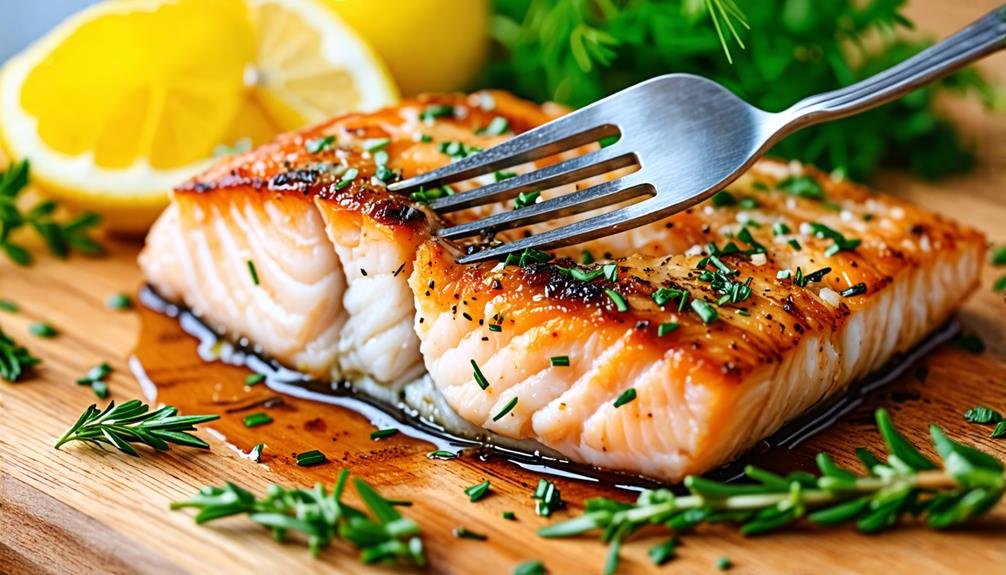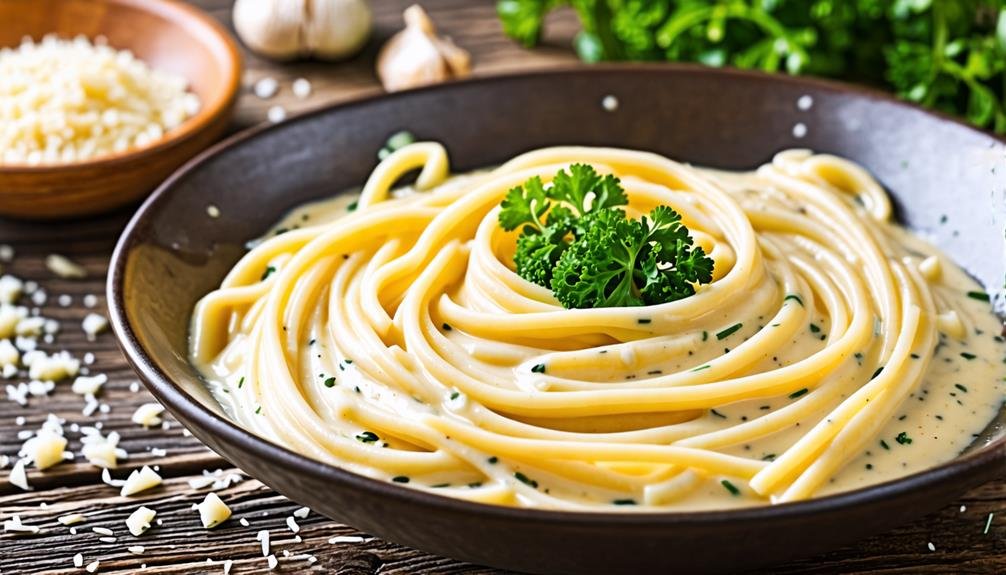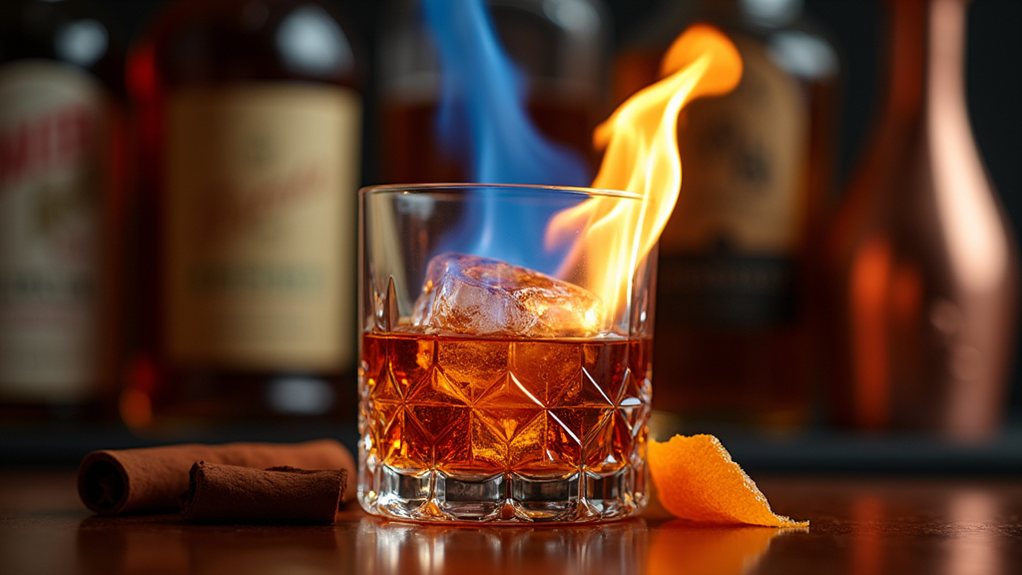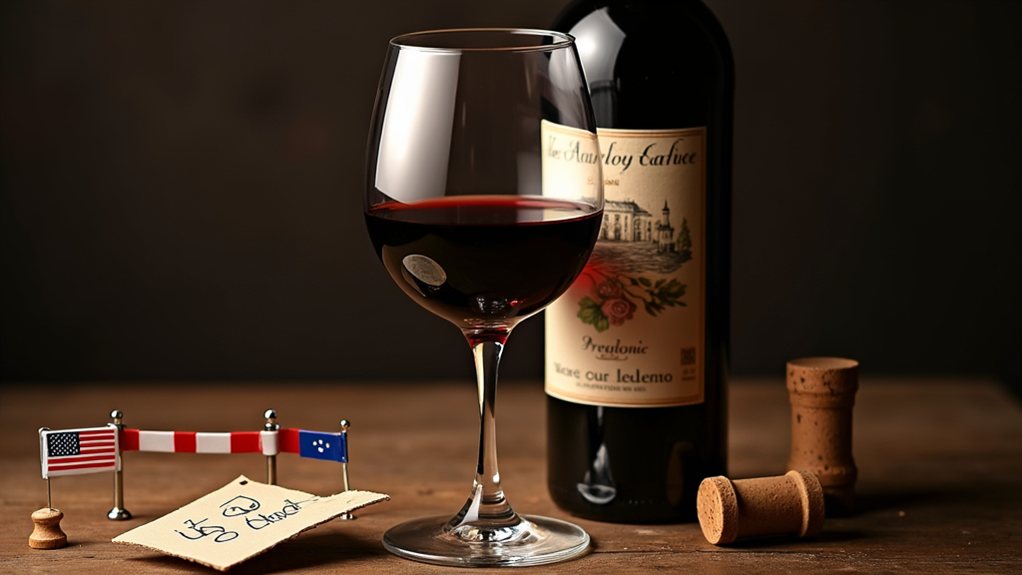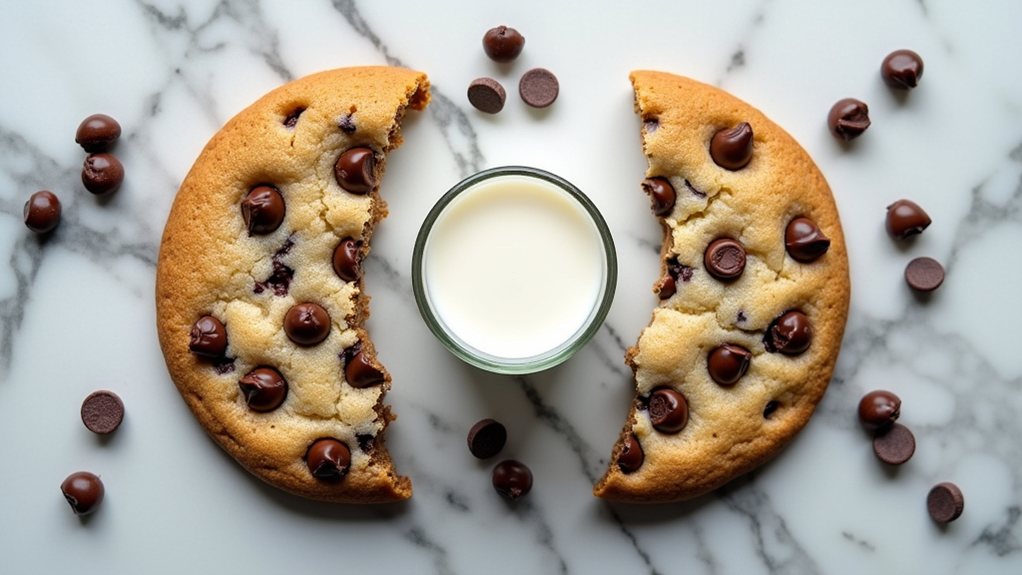Dodging typical fish cooking errors begins with grasping how to examine your fillet effectively. Always inspect for doneness by observing visual hints, such as the flesh changing from see-through to non-transparent and observing if it easily separates with a fork. Use a thermometer to guarantee the internal temperature reaches around 145°F for optimal safety and flavor. Don't overlook crucial pre-cooking preparations like defrosting and marinating, which result in superior outcomes! By mastering these techniques, you'll upgrade your fish dishes from average to exceptional. Stay tuned for even more tips to enhance your culinary adventure.
Benefits of Test Filets
Using test filets in seafood preparation presents several significant benefits, including the opportunity to enhance cooking methods and ensure optimal outcomes for your main entrée. By practicing with a test filet, you acquire essential knowledge about the perfect cooking times and temperatures for various types of fish, like salmon or cod. This experiential learning helps you understand your kitchen appliances better, allowing you to achieve that desirable flaky texture without the risk of overcooking or undercooking your prized fish.
Additionally, culinary tips for fish often highlight the importance of minimizing stress when cooking. A test filet creates a relaxed atmosphere to experiment at your own pace. You can modify seasonings, marinades, and cooking techniques without the pressure of serving guests. This practice not only boosts your confidence but also hones your ability to recognize visual signs of doneness, thereby improving your culinary expertise.
Incorporating this cooking advice into your routine revolutionizes your approach to seafood preparation. By embracing the test filet, you're not merely making a meal; you're embarking on an exciting adventure of flavor discovery and culinary excellence. So, why not dive in and relish the freedom that comes with perfecting your seafood dishes?
Common Fish Cooking Mistakes
When cooking fish, even experienced chefs can fall prey to a few common pitfalls that can dampen the culinary experience. Overcooking filets is a frequent mistake that not only ruins texture but also diminishes flavor, while ignoring doneness indicators can lead to unsafe meals. Furthermore, skipping crucial pre-cooking prep can hinder your ability to achieve that perfect, restaurant-quality dish you desire.
Overcooking Fish Filets
Overcooking fish filets is a frequent error that can lead to a dry, unappetizing texture and reduced flavor. Fish, being inherently delicate, loses its tender, flaky goodness when exposed to excessive heat. To help you navigate this culinary challenge, consider these essential tips:
- Track Cooking Duration: Various fish species have different cooking durations. Get to know the specific requirements of each type, like salmon or tilapia, to achieve optimal results.
- Employ a Thermometer: A digital cooking thermometer, such as the ThermoWorks Thermapen, will be invaluable in your kitchen. Target an internal temperature of 145°F (63°C) to guarantee your fish is cooked just right without being overcooked.
- Utilize the Resting Phase: Similar to poultry or beef, fish benefits from a resting phase after cooking. Allowing it to rest for a few minutes helps the juices to redistribute, resulting in a juicier filet.
Ignoring Doneness Indicators
Understanding the signs of fish doneness is essential for perfect results. Ignoring these signs can lead to undesirable textures and flavors. Fish is delicate; its transition from raw to cooked is subtle. Color serves as a primary indicator: cooked fish should appear opaque and should easily flake with a fork. If it looks translucent or rubbery, it's likely undercooked.
Another crucial aspect is internal temperature. For many fillets, such as salmon or cod, the ideal range is between 145°F (63°C) to 160°F (71°C). Utilizing a reliable food thermometer, like those from ThermoWorks or Taylor, eliminates uncertainty and ensures your fish is safe and delicious. Additionally, the aroma should be pleasant; an overly fishy scent might indicate it's not fresh.
Disregarding these indicators can result in a culinary disaster, turning a potential masterpiece into a rubbery disappointment. Embrace the art of cooking fish with enthusiasm! By being mindful of these signs, you'll enhance your culinary skills and ensure every meal is a celebration of flavors and textures. Enjoy the journey of experimenting, learning, and mastering this delightful aspect of cooking!
Skipping Pre-Cooking Prep
Overlooking pre-cooking preparation is a frequent error that can drastically affect the quality and success of your seafood dish. Adequate prep not only enhances flavor but also guarantees a seamless culinary experience. Embracing the opportunity to explore culinary creativity starts with a bit of organization.
Consider these essential pre-cooking tasks:
- Thawing: If utilizing frozen salmon or tilapia, allow it to defrost entirely in the refrigerator. This avoids uneven cooking and preserves texture.
- Marinating: Enhance your cod or halibut with a marinade for at least 30 minutes. This process can transform a basic meal into something remarkable with little effort, using ingredients like olive oil or lemon juice.
- Drying: Use paper towels to pat your snapper or trout dry before cooking. This simple action encourages better browning and prevents steaming, resulting in a beautifully cooked fillet.
Tips for Saving on Test Filets

A smart approach to saving money on test fish pieces involves meal planning based on current discounts and seafood promotions. By monitoring local supermarkets like Kroger or Whole Foods, you can discover excellent deals on fresh salmon or tilapia, allowing for culinary experimentation without overspending. Additionally, buying in bulk from suppliers like Costco can lead to substantial savings. Just be sure to freeze any surplus to maintain freshness for future cooking endeavors.
Opting for frozen seafood can also be a cost-effective choice, providing a lower price per portion while still ensuring quality. If you have a good rapport with your neighborhood fishmonger, ask about budget-friendly options like fish tails. These cuts are perfect for practicing your cooking skills without straining your finances.
Lastly, exercise caution when refreezing previously thawed seafood to preserve quality and ensure safety. A thoughtful strategy not only enhances your cooking journey but also allows you to sharpen your skills without financial stress. Embrace these strategies, and watch your confidence in preparing fish grow while keeping your budget intact. Happy cooking!
Alternatives to Test Filets
When looking for alternatives to test filets, frozen filets stand out as a practical option that allows for experimentation without breaking the bank. In addition, using fish scraps or trimmings can be an innovative way to practice your skills, turning what might be considered waste into culinary opportunities. Embracing these options not only improves your cooking techniques but also encourages creativity in the kitchen, helping you to master the art of preparing fish.
Frozen Filets Option
Frozen filets, such as those from brands like Gorton's or SeaPak, can serve as a practical alternative for testing various cooking techniques without the stress of utilizing fresh, often pricier seafood. These frozen options present an accessible and cost-effective solution for culinary enthusiasts aiming to enhance their skills. They enable you to experiment freely, alleviating concerns about wasting premium fish.
Here are three compelling reasons to consider frozen filets:
- Affordable: Frozen fish typically comes at a more economical price, allowing you to practice culinary skills without overspending.
- Ready-to-use: With frozen filets, you can stock a diverse selection in your freezer, prepared for spontaneous cooking sessions whenever creativity strikes.
- Reliable Quality: Many frozen fish products are flash-frozen at their peak freshness, guaranteeing consistent texture and flavor, even during your learning process.
Incorporating frozen filets into your cooking practice can elevate your culinary journey. You can explore various techniques, tweak seasonings, and master cooking times—all in a low-pressure setting. Embrace the opportunity to make mistakes, learn, and develop as a chef, laying the groundwork for future culinary successes. Dive into the adventure of preparing fish with self-assurance, understanding that practice truly leads to perfection!
Using Fish Scraps
Using fish trimmings and leftover pieces offers a creative and cost-effective method for honing cooking techniques without relying on premium filets. These discarded bits can transform into a canvas for culinary exploration. By utilizing fish scraps, you save money while minimizing waste, embracing a more eco-friendly cooking mindset.
When handling remnants, you can practice various cooking techniques, such as grilling or poaching, while refining your skills in a relaxed setting. This practical experience allows you to see how different cuts respond to heat and seasoning, ultimately enhancing your culinary abilities. Additionally, experimenting with diverse flavors on these scraps may lead to delightful discoveries worth incorporating into your signature dishes.
Furthermore, utilizing fish scraps encourages innovation. You might create fish stock or rich sauces, turning leftovers into culinary treasures. This practice not only sharpens your technique but also inspires new ways to elevate your meals. Dive into the realm of fish scraps and unleash your culinary potential, all while enjoying the journey of crafting delicious dishes!
Mastering Cooking Techniques
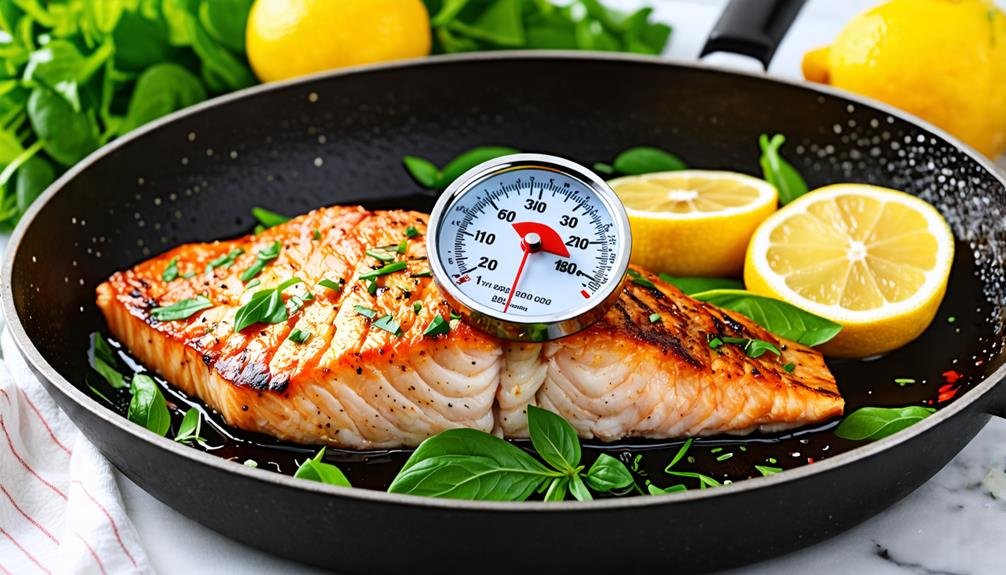
Mastering cooking methods is essential for enhancing culinary abilities and ensuring that seafood dishes are crafted flawlessly. Grasping the subtleties of preparing fish can elevate a basic meal into an extraordinary culinary experience. Here are three core methods to refine:
- Searing: Create a golden crust by applying high heat to the fish, sealing in moisture and flavor. Ensure your skillet is sufficiently heated before introducing the fillet.
- Poaching: A gentle, moist cooking approach that yields delicate fish. Utilize aromatic liquids like vegetable broth or white wine, maintaining a low temperature to prevent the protein from becoming tough.
- Grilling: Impart a smoky essence to your fish by grilling. Employ a well-greased grill and secure your fish properly to avoid any sticking issues.
Embrace these methods, allowing for exploration and inventiveness in your cooking space. Each technique unveils a realm of flavors, textures, and presentations. With consistent practice, you'll not only gain confidence but also master the craft of preparing fish, transforming every dish into a testament of your culinary artistry. Let your enthusiasm for cooking radiate in each meal you create!
Visual Cues for Doneness
Recognizing visual cues for doneness is essential when cooking fish, as it enhances your ability to achieve perfect results without solely depending on time or temperature. For your salmon filet, observe several key signs. The flesh transforms from translucent to opaque and should easily flake when tested with a fork. This change indicates that the fish is approaching readiness.
Additionally, note the color shift; salmon typically changes from a bright orange to a paler shade. You might also see the edges of the filet curling slightly, which suggests it is cooking evenly. Another important factor is moisture; well-cooked fish maintains a desirable moisture level, while overcooked fish becomes dry and brittle.
These visual indicators allow for a more liberated cooking experience, enabling you to appreciate the artistry of your dish rather than fixating on the clock. By refining your ability to read these signs, you will improve your culinary skills and enjoy the pleasure of preparing exquisite seafood dishes at home. Embrace each cooking experience, and let it deepen your understanding and love for cooking fish.
Adjusting Cooking Methods
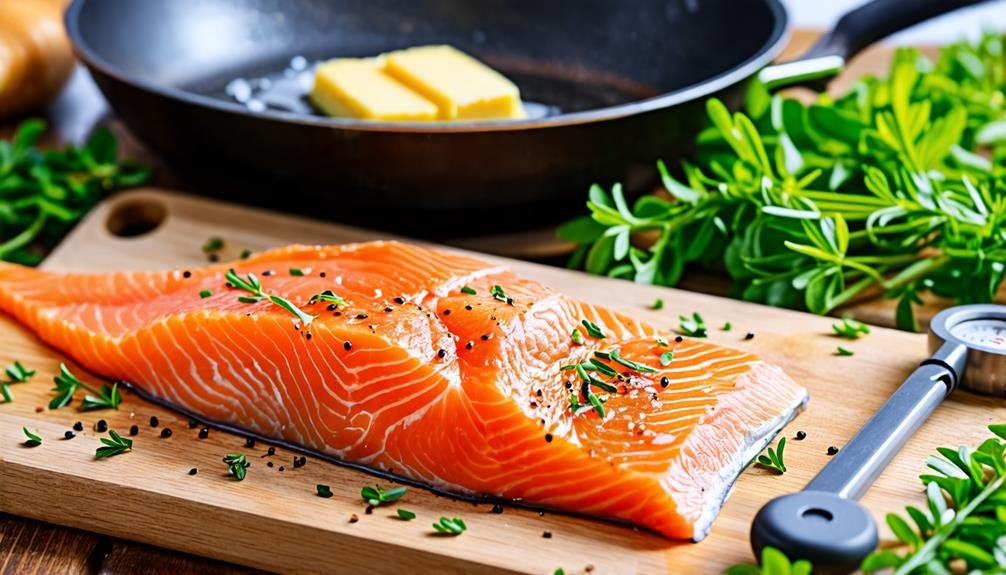
Regularly modifying cooking techniques can significantly improve the quality and taste of your seafood dishes, ensuring they reach culinary excellence. Being adaptable in your approach allows the fish to highlight its inherent flavors, captivating your taste buds. Here are three essential modifications you can implement:
- Heat Regulation: Try varying the cooking temperatures. For example, a gentle heat can result in a tender, flaky texture, while higher temperatures can achieve a crunchy exterior.
- Cooking Duration: Modify the cooking duration based on the thickness of the fillet. A thicker piece, such as salmon, may need more time, whereas thinner cuts like sole cook more quickly, helping to avoid overcooking and retaining moisture.
- Technique Variation: Feel free to change your cooking techniques. Sautéing, poaching, or grilling can each bring distinct flavors and textures to the fish, making your meals both exciting and delicious.
Enhancing Your Cooking Experience
An effective method to elevate your culinary experience involves establishing a well-organized kitchen space that fosters concentration and innovation. Start by arranging your countertop, ensuring that utensils and ingredients from brands like OXO and McCormick are within reach. This organization not only saves time but also allows you to immerse yourself completely in the cooking journey.
Utilizing a sample fish fillet can transform your fish preparation techniques. This approach offers a relaxed setting to hone your culinary skills. As you try various cooking techniques, you will discover how changes in heat and cooking duration affect the final flavor and texture. This practice builds your confidence, empowering you to handle even the most fragile seafood, like salmon, without hesitation.
Additionally, embracing creative freedom is essential. Feel free to experiment with different flavors and spices, customizing your seasonings to fit your palate. Remember, cooking is as much about personal expression as it is about mastering culinary techniques.
